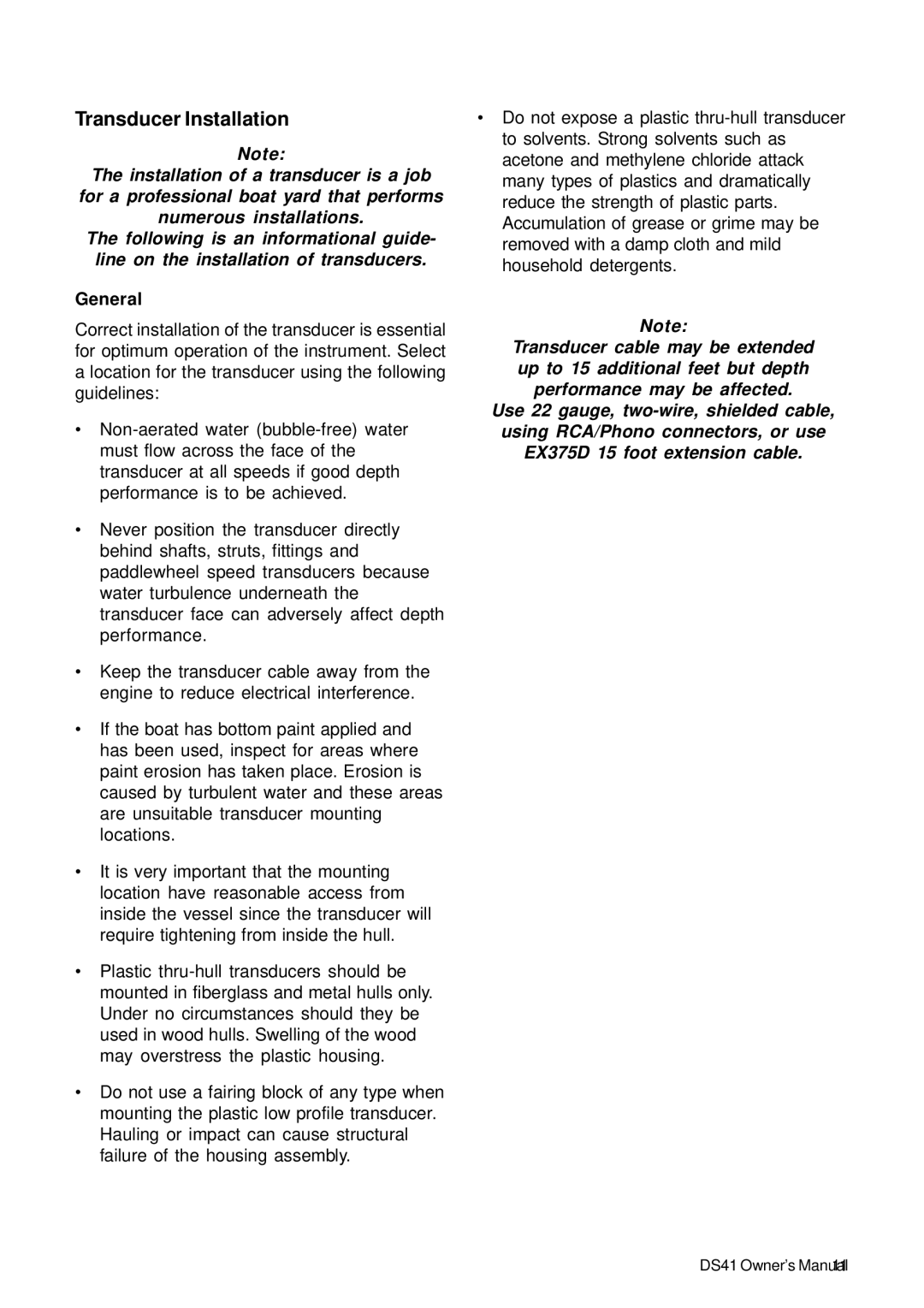Transducer Installation | • Do not expose a plastic | |
Note: | to solvents. Strong solvents such as | |
acetone and methylene chloride attack | ||
The installation of a transducer is a job | ||
many types of plastics and dramatically | ||
for a professional boat yard that performs | ||
reduce the strength of plastic parts. | ||
numerous installations. | ||
Accumulation of grease or grime may be | ||
The following is an informational guide- | ||
removed with a damp cloth and mild | ||
line on the installation of transducers. | ||
household detergents. | ||
| ||
General |
|
Correct installation of the transducer is essential for optimum operation of the instrument. Select a location for the transducer using the following guidelines:
•
•Never position the transducer directly behind shafts, struts, fittings and paddlewheel speed transducers because water turbulence underneath the transducer face can adversely affect depth performance.
Note:
Transducer cable may be extended up to 15 additional feet but depth performance may be affected.
Use 22 gauge,
•Keep the transducer cable away from the engine to reduce electrical interference.
•If the boat has bottom paint applied and has been used, inspect for areas where paint erosion has taken place. Erosion is caused by turbulent water and these areas are unsuitable transducer mounting locations.
•It is very important that the mounting location have reasonable access from inside the vessel since the transducer will require tightening from inside the hull.
•Plastic
•Do not use a fairing block of any type when mounting the plastic low profile transducer. Hauling or impact can cause structural failure of the housing assembly.
DS41 Owner’s Manual11
